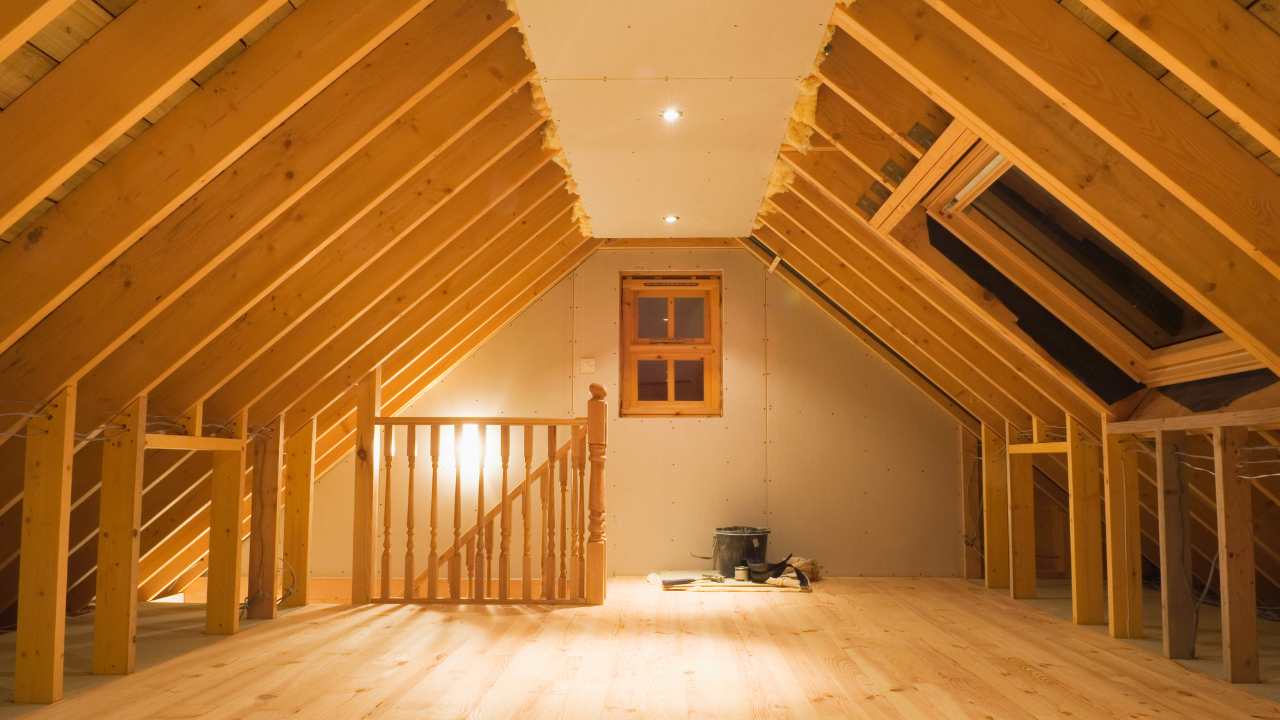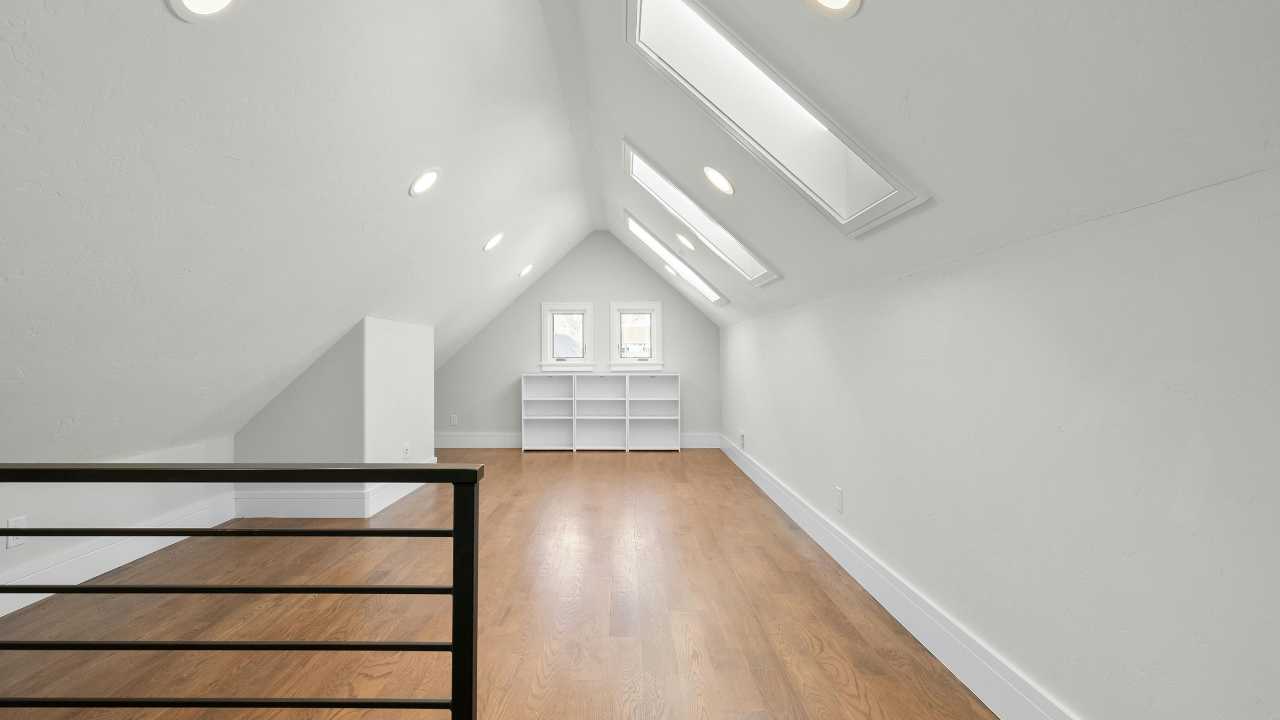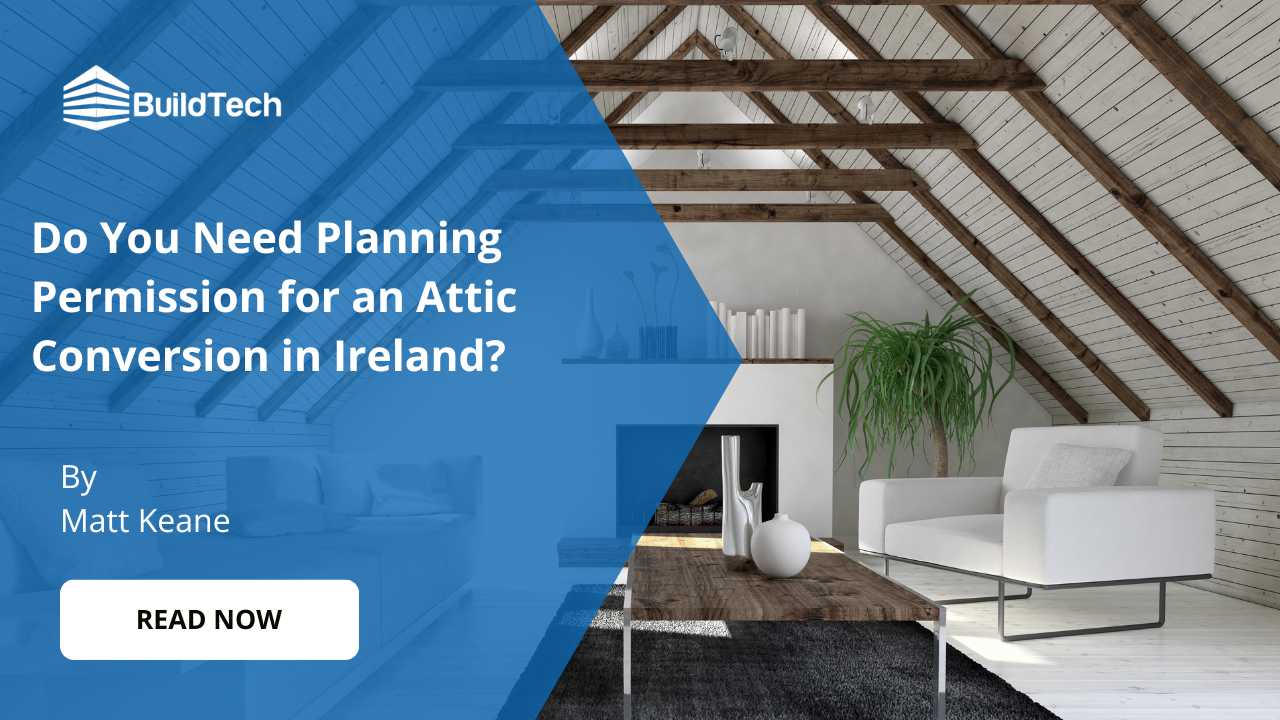Have you been thinking about turning your unused attic into a cosy bedroom, home office, or extra living space? Before you begin, it’s important to understand what permissions and regulations apply.
Many homeowners thought, “Do you need planning permission for an attic conversion in Ireland?” The answer depends on how much structural change is involved and whether the new space will be used for living.
In this blog, we will explore when permission is required, when it’s not, and the key building regulations to follow, helping you plan your attic conversion confidently and avoid costly mistakes.
Let’s start!
When You Don’t Need Planning Permission for an Attic Conversion in Ireland?
If you’re only using your attic for basic storage or light changes, planning permission is usually not required. This applies when the space remains non-habitable and no major external alterations are made.
Non-Habitable Space
If you’re creating a simple storage area, hobby space, or similar non-living zone, you won’t need permission. Since it’s not meant for regular living, there’s no concern over heating, ventilation, or fire safety rules.
You can still add insulation or flooring for safety, as long as it doesn’t turn the area into a living room.
Rear Velux Windows
Installing roof windows at the back of your home is typically exempt from permission. Rear Velux windows don’t affect your home’s appearance from the street, so they’re usually accepted as minor works.
However, make sure the windows don’t overlook a neighbour’s property or alter the roofline in a visible way.
Do You Need Planning Permission for an Attic Conversion in Ireland?

If you’re turning your attic into a liveable room or making big changes to the roof, you will need to apply for planning permission. These changes usually affect structure, safety, or your home’s look from the outside.
Habitable Space
Turning your attic into a bedroom, office, or living area needs permission because it becomes a functional part of your home. This involves meeting rules for ceiling height, insulation, and fire safety.
Asking yourself “Do you need planning permission for an attic conversion in Ireland?” helps clarify these legal limits.
Dormer Windows
Adding dormer windows changes the shape of your roof and adds extra space or light. Since it alters the outside structure, it requires formal approval.
You’ll also need to make sure the design fits the overall look of your home and nearby buildings.
Front or Side Velux Windows
Roof windows at the front or side of your property are more visible and can affect privacy or the building’s appearance. Because of this, these installations require planning permission.
Even small changes to the front elevation can trigger a review from local authorities.
Major Structural Changes
If your project involves changing the shape, height, or strength of the roof, permission is essential. Structural work can affect stability and neighbouring properties, so it must be assessed by your local planning office.
Always consult an expert before starting any large-scale modifications.
What Are The Important Things to Keep in Mind?
Before starting your attic conversion, there are a few key rules and checks you shouldn’t overlook. These steps make sure your project is safe, legal, and built to a proper standard.
Building Regulations

Every attic conversion must follow building regulations, even if planning permission isn’t needed. These rules cover fire safety, insulation, ventilation, and the structure’s strength.
They’re in place to protect both you and your property from future risks. Following them also helps maintain your home’s value and safety.
Certificate of Compliance
Once the work is complete, you should get a Certificate of Compliance from a qualified professional. This confirms that the conversion meets all required building standards.
It’s essential for legal and safety reasons, and you’ll also need it if you ever decide to sell your home. Keeping this document gives peace of mind that the work was done properly.
Professional Advice
It’s always best to seek help from a professional such as an architect, engineer, or surveyor before beginning. They can assess your plans and explain whether you’ll need planning permission or any adjustments.
Their guidance helps you avoid costly mistakes and keeps your project within the law. Investing in expert advice early on can save a lot of trouble later.
Conclusion
Whether you need planning permission for an attic conversion in Ireland depends on how you plan to use the space and the type of changes involved. Simple storage areas or rear roof windows often don’t need approval, but converting your attic into a bedroom, adding dormer windows, or making structural changes usually does. Always follow building regulations and seek professional guidance before starting.
If you’re ready to turn your attic into a safe, comfortable living space, contact BuildTech today. Their experienced team can help you handle planning requirements, design, and construction from start to finish, making your attic conversion simple and stress-free.

















